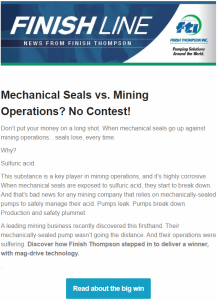— September 12, 2019
Early one Monday morning this August, the Business Roundtable — an organization comprised of CEOs from almost 200 major US companies — released an official press release that announced a startling pivot: Focusing on shareholder payouts should not be all there is to running a company.
What the Business Roundtable finally echoed was the growing sentiment bubbling up from observant HR professionals, workers, unions, and policy advocates for nearly four decades: Milton Friedman was wrong, supply-side economic models are flawed and incomplete, and maximizing profits should not come at the expense of consumers.
Well, the actual statement only noted that maybe shareholders are not the alpha-stakeholder when it comes to profit drivers, but you get the point.
Numbers Don’t Lie
Let’s refer to the math: In 2018, the Economic Policy Institute found that the average CEO pay is 271x that of the average worker (in the same year, Forbes found that the ratio at S&P 500 firms is 361x). Around the same time, Fortune found that the top markets for job opportunities were concentrated in tech, healthcare, and biotech centers close to top universities including Boston, San Jose, San Francisco, Pittsburgh, Washington DC, Raleigh, Seattle, Hartford, Denver, Baltimore, and New York City.
Across these markets, the average non-CEO net take-home pay (after an assumed 2% retirement plan contribution) is just 7% of earnings. Within that average, within the highest demand markets for skilled labor, net take-home pay ranges between negative 1% and negative 17%, forcing consumers to either increase credit card debt or cut back on non-discretionary spending on food or housing. In other words, robust job markets in isolated regions drive up market demand for all goods in those regions.
When this happens, employed folks in robust job markets can be just as fiscally handicapped as the un- or under-employed in lagging job markets. Fewer than 50% of high-demand job markets pay enough to achieve a positive savings rate without cutting back on non-discretionary spending or increasing credit card debt (the four options under analysis are public transit & rent; public transit & own; drive & rent; drive & own).
Data Tells Stories
How does this pertain to HR technology? It has a lot to do with the labor and talent crisis US industries are facing amidst the changing labor market to which many firms have failed to adapt.
Aberdeen has found that more than 60% of companies routinely complain that they are unable to attract the talent they need to fill key roles, yet the US Bureau of Labor Statistics (BLS) continues to contend that unemployment, while up slightly, is at an all-time low.
A Side Note: I hate to break it to the BLS, but their model for tracking unemployment has also failed to adapt to the changes in the world of work. This includes the changing dynamics in the relationship between employers and the workforce, the shareholder-first mentality that has sacrificed employee loyalty and decimated middle-class growth, and the rapid emergence of underemployment that has pushed worker-consumers to seek alternative, secondary earnings options. Back in 2010, Peter Diamond of MIT, Dale Mortensen of Northwestern University, and Christopher Pissarides of the London School of Economics won the Nobel Prize for their collective call for a new unemployment model in the wake of the financial crisis and the entry into an L-shaped market performance model. It won great fanfare, but US agencies failed to take note, so here we are with disconnects between data reporting and reality.
Back to Business
When it comes to understanding the mechanics of the workforce, employers are still upside-down. In a recent webinar, Aberdeen reiterated the fact that employers focus their HR investment overwhelmingly on talent acquisition over talent and performance management, perpetuating a culture that talent is only valuable in the immediate or until better-trained talent comes along to suit internal changes.
In the 2018 lecture address to the Harvard Business School fellowship donors, Joseph Fuller explained how four quadrants have emerged in the talent market, which has essentially become bifurcated along a skill-level axis and a knowledge-level axis. To make it in today’s changing world of work, employees must be either high-skilled and high-knowledge, or low-skilled and low-knowledge. In the latter category, employee upward mobility is limited without expensive training, making these employees cheaper than machinery and automation for the jobs they fill. The former category contains the much-sought-after innovators whose contributions outpace technological growth because the workers contribute to it.
While more than 80% of HR departments emphasize a focus on employee engagement and development, the average employer still focuses on hiring external talent over full employee lifecycle and growth management by up to a ratio of 2 to 1. An overweight focus on hiring over internal performance and redeployment is handicapping firms to fight for top talent in a shrinking pool of high-skilled, high-knowledge talent, while driving up the cost-per-hire of top talent. The formula should be obvious: Top talent that’s already inside the firm and accordingly trained is cheaper to hire (or reallocate)than an external hire whose understanding of the firm is limited to looking at the firm’s website.
What Profits Really Look Like
Tying technology, people, and economics together, organizations need to commit to a structural and cultural change rather than this delayed epiphany that shareholders shouldn’t be the only stakeholders to take priority.
In fact, in terms of long-term growth, shareholders should be last in the pecking order. Performance-based talent investments should come first to push more of the middle categories of labor in HBS’ talent matrix into the top, left quadrant. Investments in training, learning, and development have lagged as profit-by-cost-cutting took precedent over profit-by-new-revenue-development. In 2019, Aberdeen found that while profitability increased for 66% of companies, net new revenue fell flat or only marginally increased for about 60% — indicating that for most companies, the only pathway to profit growth was to cut operating costs.
Since the 1980s, targeted internal cost-cutting measures have sacrificed quality learning and development programs, mentorships and coaching, management training programs, education reinvestment opportunities, salary growth, and investments in productivity development. This happened at a time when external training costs to worker-consumers grew by 1,334%, which resulted in an increase in resistance among worker-consumers to further invest in said measures Employee resistance amidst this rising cost is reasonable too — The Society for Human Resource Management (SHRM) estimates that entry-level salaries have only risen by 3% year-over-year despite acceleration in executive and shareholder payouts reaching 70x that. Meanwhile, the cost-of-living in high-growth job markets is rising by upwards of 30% year-over-year, driven by rising education debts, healthcare costs, housing, and insurance.
Salary increases are not even remotely keeping pace with the cost of migration for work as high-growth job markets plunge jobseekers into a high risk of negative savings rates. Without opportunities for growth and development, not only will corporations fail to see anything beyond incremental growth, but the market will fail to stimulate lasting consumer spending.
The Bottom Line
The long and short here is that while the Business Roundtable’s commentary is a step in the right direction, it’s about 40 years too late. The damage to the market, the consumer, the corporate hierarchy, and beyond has already been done.
If this statement is to mean anything, the HR community will begin to realize renewed funding for broader and all-encompassing training and development, redeployment, and career-pathing for both new and existing talent.
Furthermore, worker-consumers will begin to see salaries rise in parallel with the growth of corporate profits and scaled by performance-based contributions that technology helps to more objectively determine. HR will regain its strength to drive productivity and growth while no longer being a proxy for producing a quality workforce while insulating the company from any workforce-related risks.
Today’s world of employment is constantly changing, posing challenges to employers and employees as they seek to find the best match between them. To learn more about the challenges facing this ever-shifting landscape and how you can face them head on, check out Aberdeen’s webinar, “Top Talent and You: The Value of a Career Mobility Strategy.”
Business & Finance Articles on Business 2 Community
(25)









